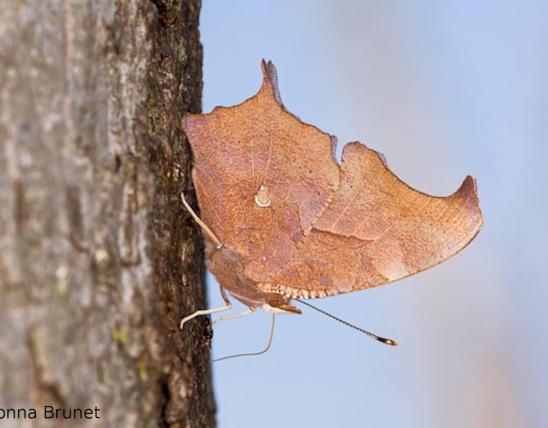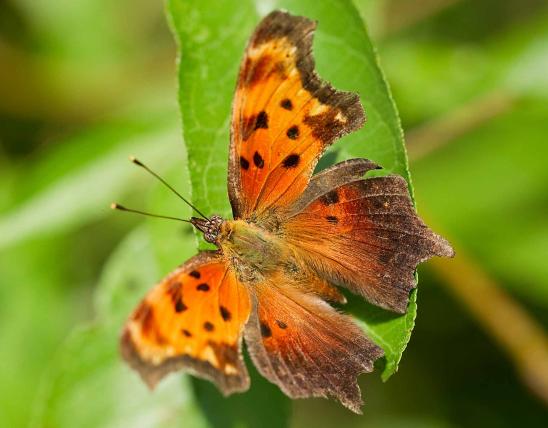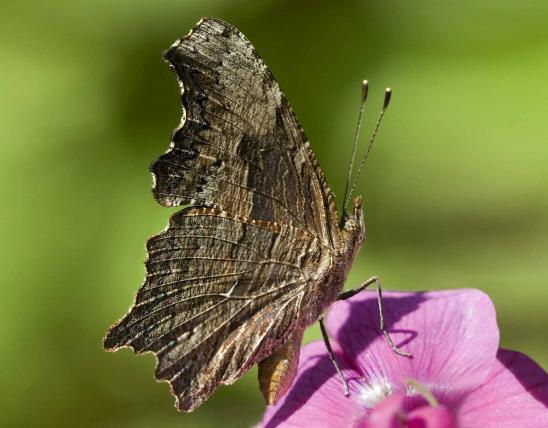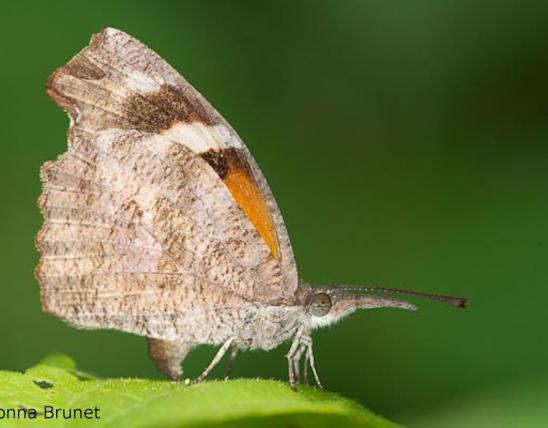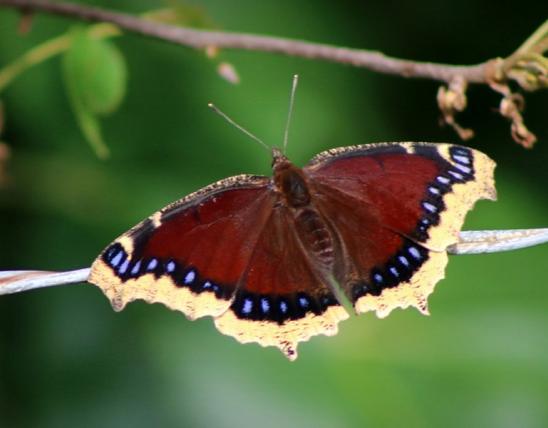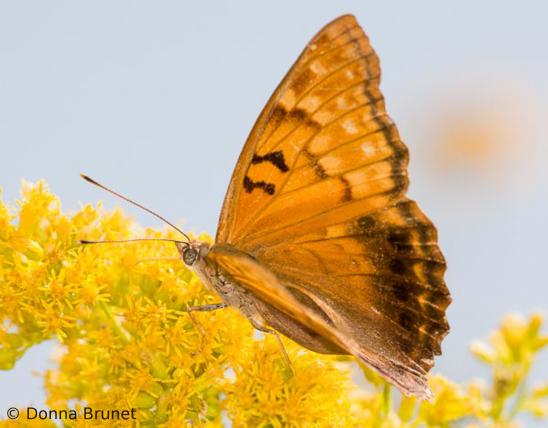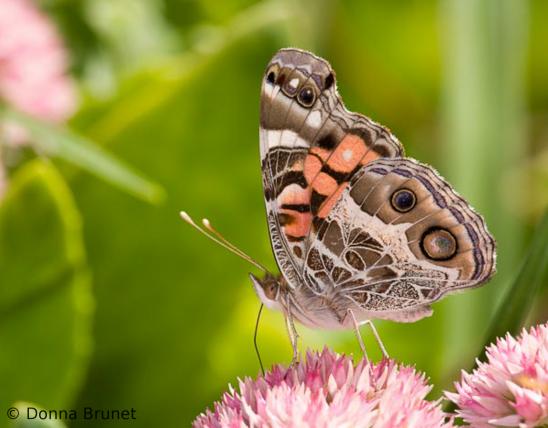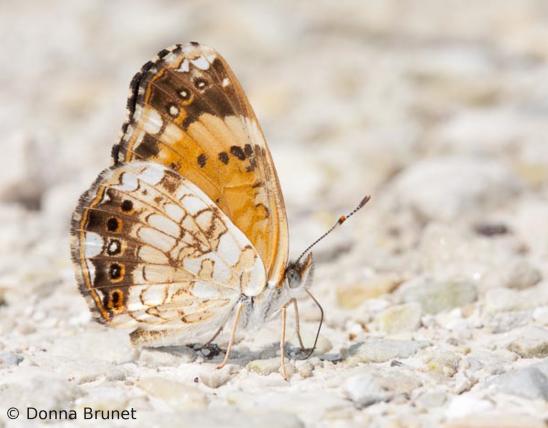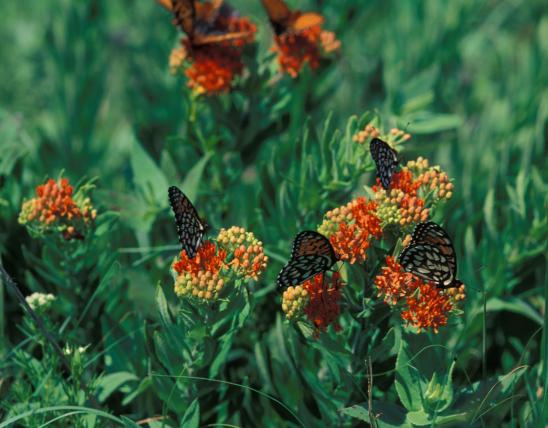
As it rests with wings closed, the goatweed leafwing mimics a dry, dead leaf. But when it flutters around, it flashes bright rusty orange on the top side of its wings.
Adults are orange above and brown below. Both sexes have a dark spot on the dorsal forewing (in the discal cell). Males have a dark margin; females have a wide yellow-orange submarginal band (just inside the outer edge) bordered by darker scales. The winter form of both is more boldly marked, the forewings are more pointed and the tails are longer.
The wing margins are not scalloped, and the ventral (lower) side is a fairly uniform brown, separating this species from the anglewings (Polygonia spp.), such as the commas and question mark.
Caterpillars are grayish green with small raised dots; the head is grayish green with small protuberances.
Wingspan: 1¾–2½ inches.

Statewide. Found in all regions of Missouri but encountered in greater numbers in the Ozarks.
Habitat and Conservation
Usually seen in wooded areas. The goatweed leafwing alights frequently on the ground or on tree branches and, with wings folded over the back in the normal resting position, it almost perfectly mimics a dried, dead leaf. This butterfly is a strong, fast, but unpredictable flier.
Food
The caterpillars feed on the leaves of goatweed, hogwort, and other plants in the genus Croton. With their rather short tongues, the adults do not visit flowers, but they often absorb nutrients from damp places, tree sap, decaying fruit, and animal droppings.
Status
Breeding resident.
Life Cycle
The winter form emerges from chrysalids at the end of August and lives until May or June, mating in the spring; thus, they hibernate as winged adults and are sometimes seen flying on warm, sunny days in midwinter. The summer form flies from late June into August. The length of daylight experienced by the nearly full-grown caterpillars determines whether they emerge from their pupae as winter- or summer-form adults. Day length also determines if females will mate soon after emerging (summer form) or wait for the winter to pass before mating.
Males perch on vegetation near open places and wait for females to fly near. Females deposit eggs singly on suitable host plants, under the leaves. Caterpillars fashion protective structures out of their food plants. When young, they nibble away all but the midrib of a leaf and rest on the leaf tip. As they grow larger, they create shelters of host plant leaves, first folding them over their bodies, and later rolling the leaves, with only their tough, chunky heads plugging the hole.
Human Connections
Charles Darwin wrote about the survival value of animal camouflage in the middle 1800s, but camouflage wasn’t widely used for military purposes until a French Cubist painter, André Mare, developed it to hide artillery in World War I. Now, people study nature expressly for ideas for new technology.
Ecosystem Connections
Goatweed leafwing caterpillars are herbivores that graze on vegetation. Despite the amazingly accurate camouflage of both larvae and adults, all stages of this species provide food for predators.
























